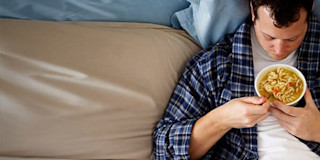Over-the-counter (OTC) medicines for a cold
There are a lot of different over-the-counter (OTC) cold and flu medicines out there. From cough medicine to sore throat spray, lozenges to decong…
How to sleep with a cold: The do's & don'ts
Cold and flu symptoms can make it tough to get a good night’s res…


